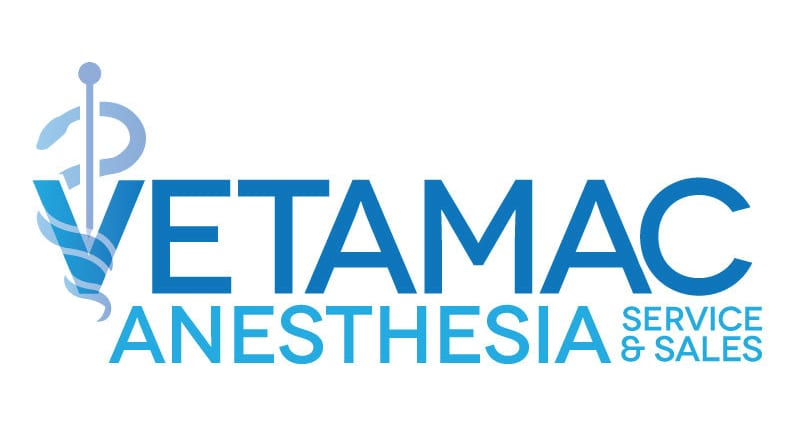Activated Charcoal Canisters You Asked. We Listened.
Vetamac Vapors Volume XV Spring 2019
Cynthia Burns, RVT / Michelle McConnell, LVT, VTS (A&A)
Activated Charcoal Canisters are used to help remove waste anesthetic gases (WAG) by a passive system. This passive method relies on the flow from an anesthesia machine (oxygen usually mixed with Isoflourane or Sevoflurane) and the anesthetized animal’s exhalation volume to push the waste anesthetic into the charcoal canister. Different brands, styles, and oxygen flow rates will vary the effectiveness of absorption rates.
What is activated carbon and what does it do? It’s not the charcoal you grill with! That charcoal is made from repurposed wood. Activated charcoal is specifically made for medical use. It removes the following anesthetic gases: Isoflourane, Sevoflurane, Halothane, and Enflurane. It does not remove oxygen, carbon dioxide, or nitrous oxide.
Types of Canisters: For purposes of this article we will be discussing the two most commonly seen styles of canisters:
• F/air style Bickford manufactured (flow through canister, from the top, and out the bottom)
• VaporGuardTM Vetequip manufactured (air flows down into the canister and out of the top of the canister)
How should extra canister(s) be stored? Store in a cool, dry place.
When should the canister be replaced? Weight Gain? Time? Prior to first use, the canister should be weighed on a gram scale and the initial weight recorded on the canister. Ideally, the canister should be weighed after each surgical procedure and replaced after the manufacturer suggested weight is achieved. Majority of canisters recommend replacing the canister after it weighs 50g more than its beginning weight. Time is not recommended for keeping track of saturation of the activated charcoal. A higher fresh gas flow rate and the size of the patient can both contribute to how quickly a canister reaches the recommended weight increase.
How should the canister be positioned? F/air canisters should always be suspended and upright, allowing the excess gases to flow through the bottom of the canister. These canisters should never be placed directly on a countertop. A holder is available to allow for proper installation on most pole mounted anesthetic machines. VaporGuardTM canisters can be positioned in any position.
Why is it important to keep the openings of the canister unblocked? The excess gases need a way to escape into the environment; if these openings are blocked a build-up of pressure may occur in the breathing system. An indication of a blocked canister would be an overinflated breathing bag. The Breath Fresh Gas Filter by Jorgensen has a sticker on the bottom of the canister that does need to be removed before first use (see illustration).
Does condensation affect the activated charcoal’s ability to absorb the anesthetic agent?
Yes, moisture will affect its ability to perform and cause an inaccurate weight of the canister. According to the manufacturer of the VaporGuardTM canister: Running pure oxygen through a canister for approximately 5 minutes at 2LPM should help to dry the canister out. To help prevent a build-up of condensation in the breathing system, Vetamac recommends keeping the breathing bag and breathing circuit off the machine when not in use. This will give the breathing system a chance to “dry out” between uses.
What is that smell? It may be your vaporizer or a leak in the breathing head, but it could also be coming from your activated charcoal canister. First, pressure test your anesthesia machine ensuring no leaks are present. Then consider these two things:
1) Your activated charcoal canister might be saturated, and it is time to replace.
2) Your anesthetic flow rate might be too high of a flow to let the charcoal effectively filter the WAG.
How should I discard a saturated canister? The canister can be discarded into your regular trash. After all, the activated charcoal has “captured” the anesthetic agent.
If you have any additional questions regarding your waste gas systems, activated charcoal systems or have another topic you would like discussed, please contact your local Vetamac Service Technician.
Works Cited: Lumb and Jones, Blackwell / Dorsch and Dorsch, LWW
